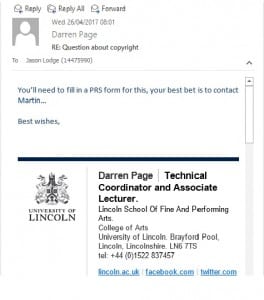How do Arts Council England define marketing?
“Marketing is the process of communicating the value of your work to potential audiences, visitors and participants. A good marketing plan will allow you to meet your goals and the needs of audiences. It encourages you to consider the audience perspective as you plan your activity. You should look at things like choice of activity, where and when the activity will take place, possible costs for the audience, and methods of involving and communicating with potential audiences and participants.”
ACE suggest that you make a marketing plan to achieve the above, consisting of:
“Background information on you and your current activities
Briefly describe what you currently do, and explain why you have decided that you need to do the audience development and marketing activity that you are asking us to fund
Your (audience) objectives
Clearly set out the objectives and targets for your audience development or marketing activities. Make them smart (SMART) – specific, measurable, achievable, relevant and timely. For example; increase audience aged 55 – 65 for Jazz performance by 5% before October next year. Look for evidence that these are realistic
The details of your activity
Describe the target audience or participants for the activity (be specific, identify each ‘audience type’, for example students aged 18–24). Provide details of how many people you are hoping to involve (be specific and break this down by each ‘audience type’). Describe the benefits and why it would appeal to them. Describe what is unique or different about your activity and plans
Demand for your activity
Describe how you know that there is demand for your activity from your target audience, and provide details of any research you have carried out
Audience development and marketing methods
Describe the tools, approaches and methods you plan to use to reach your target group
Timetable
Provide details of the timetable for your activities, give exact dates if possible
Budget
Provide details of the income and expenditure for your audience development and marketing plan, and remember to include the costs of evaluating your plans. Where possible break down the figures to show the detail of the budget. For example, If you were engaging a freelance marketing advisor for 4 days work and they charged £250 per day, you would express this as: 4 days @ £250 per day = £1000.
Evaluation
Describe how you will evaluate the success of your plan against your objectives and targets. For example, how you will find out if you have reached the people you wanted to reach. Include information on when you will do this and who will be involved. Remember to reflect, review and evaluate to inform future work.”
This is the plan that I roughly followed when constructing our company’s presence on social media, our brand, and our relationship with our potential audience. This plan aims for a company to be able to apply for ACE funding by knowing in detail all of the above questions, and I believe that with a slightly more detailed understanding of the Timetable and Demand for Your Activity sections, The Pin Hinge Collective’s marketing plan would be ACE funding worthy.
I knew from the ACE website and from reading works such as This Way Up by Caroline Griffin that in order for our marketing to be in-keeping with ACE funding requirements, I would have to focus heavily on our “identity” (Griffin, 2007) as a company and how to get this across, particularly through social media, our copy and our print. These methods in particular are some of the most common ways a “customer can come into contact with [our] organisation” (Griffin, 2007), and therefore needed to be consistent and in-keeping with our company ethos/manifesto.
To ensure I did this, I made the textual content put out across social media warm, welcoming and for the most part, informal. This was to build a rapport with an audience and act as a very personal form of communication. I also made sure our visual content was diverse, bright and colourful to not only be eye-catching, but to appeal to different people in different ways, going alongside our desire to create personal, intimate theatre that celebrates individuality.
Something that Griffin promotes in This Way Up is the use of word of mouth or “friends” (Griffin, 2007) as advocates for our association. I made use of this advice by engaging consistently and confidently with other theatre companies across social media platforms and in person, networking and advertising each other’s shows to branch out into each other’s audience pools. This became extremely useful during our fundraising period as other theatre companies such as Rubbish Theatre were interacting with and sharing our fundraising activity to their audiences – and this gained results! Networking is an extremely important part of marketing!
Works Cited:
Arts Council England (2017) Audience development and marketing, and Grants for the Arts.
Griffin, C. (2007) This Way Up. Cambridge: Arts Marketing Association.

